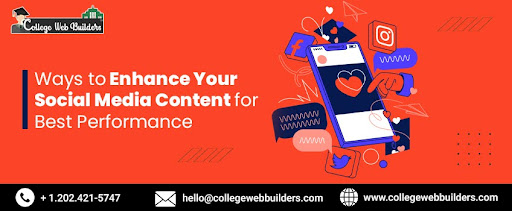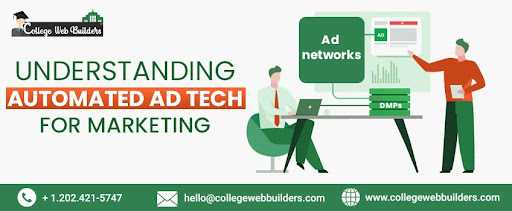
Leveraging SEO & SEM for Businesses
SEO and SEM are now imperative tools in the business world for every company aspiring for expansion and increased sales in the market. The right SEO and SEM strategies will enhance website visitors, leads, and sales. In this blog, our Search Engine Marketing Company, Ashburn USA, explains where, how, and why SEO and SEM work for businesses of all sizes.
Understanding SEO & SEM
SEO and SEM may appear to be similar strategies since they have similar abbreviations but differ.
SEO is an abbreviation that represents search engine optimization. Organic SEO and search engine optimization are terms used to describe legal techniques in the pursuit of enhancing the ranking of a website on search engines such as Google. It is an endeavor to secure non-paid, organic ranking on SERP for specific keywords, whenever the users search for the same.
SEM is an acronym used to refer to the process of search engine marketing. It involves promoting businesses and websites through paid advertisements placed on the internet or search engines within the search network. The most-used SEM strategy is Pay-Per-Click (PPC) marketing, which requires advertisers to bid on certain keywords to have text/image and video ads appear in search results above or with the organic results.
Business entities use SEO to bring in traffic from search engines interested in the products or services offered on the website. SEM targets potential customers who may still need to plan to search for your services and products, thus bringing in more traffic to your website. Alone, these are useful for visibility and traffic when used in conjunction.
SEO Best Practices for Businesses
- On-page optimization – This concerns the optimization of every webpage with techniques such as keyword-specific content development, Meta tags, title, description, images, proper URL, loading speed, and proper coding.
- It directly relates to content marketing and helps a website's organic visibility by publishing relevant and informative content such as blogs. The information provides utility and will likely attract the target audience's attention and garner links.
- Local search engine optimization - optimizing a website for local searches is beneficial for any business that wants to target users interested in the products or services they offer in particular regions. It involves local business schema markup, GMB profile optimization, and the use of topics that are relevant to the local area.
- Technical site audit - Removing broken links, site errors, structured data problems, and slow site speeds is essential for overall SEO and user experience.
- Link building - Obtaining the backlinks from the other related websites is a valuable signal and promotes ranking improvement. Outreach, partnerships, contributor posts, and shareable assets support getting high-value links.
- Core Web Vitals - These are new signals that analyze the experience of users on the page and its performance across both the mobile and the desktop. Implementing an excellent CWV assists in satisfying Google’s ranking algorithm and provides users with a nice interface.
SEM Power for Businesses
From the above benefits of SEM advertising, the most interesting factors that one can get from it are the level of control, the precise targeting opportunities available, the quantifiable results usually offered, and the flexibility accompanying it. He means that different companies can address the most relevant audience and create applications best suited to achieve such goals as sales, clicks, etc. Useful SEM strategies include:
Pay-Per-Click Search Ads - These plain text ads appear alongside search results and offer high levels of targeting by keyword, location, gender, interests, hours/days of the week, devices, etc. It offers users flexibility and effectiveness because advertisers only pay when the user clicks.
Banner Advertising - Images, texts, and videos placed on various advertising platforms aimed at specific audiences based on contextual or Interest-Based advertising.
Shopping Campaigns - A feature that enables businesses to display images, prices, etc., directly in the search results, enabling users to find products of interest.
Remarketing - Displaying ads to people who've visited or purchased from a site gets you in front of people predisposed to converting.
Testing & Optimisation - The continuous carrying out of the A/B split tests concerning the headlines, ad text, landing pages, images, call to action, and alterations in line with the obtained results enhance the campaign's profitability.
Exploring the Advantages of Using A Multifaceted Approach
SEO covers only the natural or unpaid search results, where one makes adjustments to the content and other aspects of the Web site to increase the probability of showing up high on the search engine's unpaid listings. Strictly referring to paid search advertising, SEM makes it possible for businesses to pay and get their ads listed on the preferred positions in the search engines' paid listings with the help of a PPC management service in Ashburn, VA. While they have different approaches, SEO and SEM possess important synergies when used together:
Keyword Research - Any keywords used in content with the objective of SEO should also be used in any SEM advertisement campaign. It helps in strategy in both fields to discover high-value keywords with the right search volume.
Landing Page Optimization - This should present the visitors with relevant information and content every time they get to the page through organic search or a paid search link. There should be a good working relationship between the SEO and SEM practitioners regarding the design of the landing pages.
Transparency of Insights - Data and information from SEO and SEM campaigns should be available to other related departments. This way, each team can get a clear picture of the keywords, content, and traffic with higher performance, and so on. Consequently, conversion tracking of key metrics makes it possible to share analytics and conversion rate optimization activities between SEO and SEM so that both traffic sources would drive specific business results, not just visitor traffic. This can help improve the ROI because it focuses on the actual keywords and landing pages that result in conversions.
Relevance Scoring - Some of the input into organic and paid listings include the relevance of sites. A strict correlation between SEO and SEM raises relevance rates –increasing rankings and decreasing long-term paid search expenses due to higher Quality Scores.
There is a need to blur the distinctions between SEO and SEM functions within a digital marketing team to get more benefits from content sharing, technology integration, and analytics and relevance convergence – getting higher volumes of better quality organic and paid search traffic at lower cost. My opinion is that the integration of the approaches yields increased results.
Conclusion
In other words, people must understand that it is possible to achieve a synergistic effect by using both organic and paid media elements. When such core aspects are technically correct, content communicates with the visitors, ads attract the right traffic, and when conversion points are optimized, businesses open themselves up to great opportunities to engage, educate, and convert the audiences critical for growth. For more information or to avail services of our content marketing services company in Ashburn, Virginia, visit Collegewebbuilders.com.
- Tags: Marketing, Onlline, Internet





